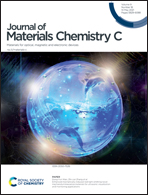Three-dimensional/two-dimensional photonic crystal hydrogels for biosensing
Abstract
Photonic crystals (PCs) have attracted intense interest for sensing applications. Photonic crystal hydrogels (PCHs) consist of both periodic PCs and stimuli-responsive hydrogels, which can act as a sensing system for the detection of specific analytes. In PCHs, the hydrogel system undergoes volume phase transitions (VPT, swelling or shrinkage) upon exposure to external stimuli. The VPT of the hydrogel causes the photonic stopband of the PCs within the hydrogel to change, which shifts the Bragg diffraction peak wavelengths. Based on this sensing mechanism, a variety of PCH sensors that can respond to external stimuli, such as humidity, temperature, pH, hazardous chemicals and biological species, have been reported. In this review, we overview the response mechanism, preparation methods, and biosensing applications of three-dimensional (3D) and two-dimensional (2D) PCHs. 3D and 2D PCH biosensors are systematically summarized according to the types of the target analytes. At the end of this review, we also propose the prospects of PCHs in the field of biosensing.



 Please wait while we load your content...
Please wait while we load your content...